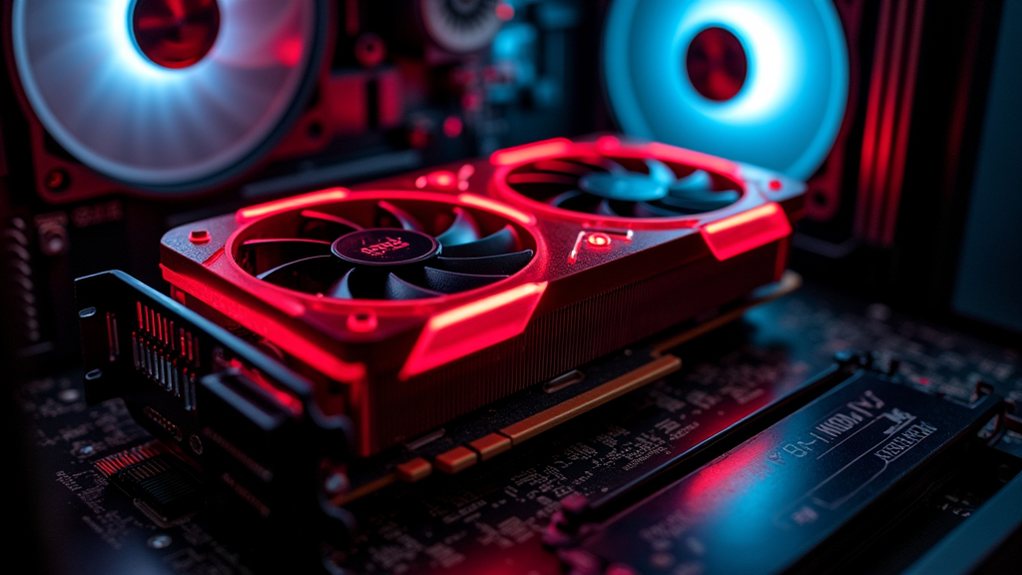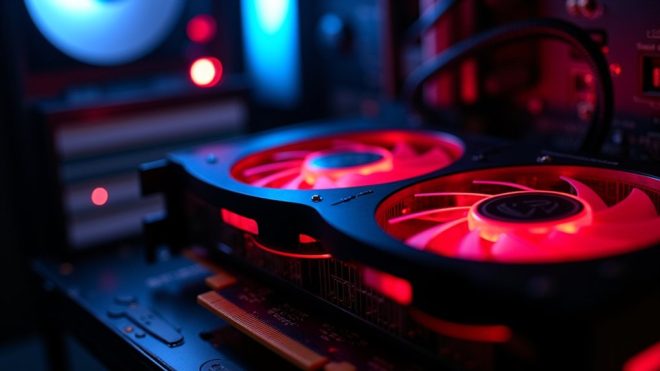AMD’s graphics driver installations continue facing an uphill battle against Windows 10 and 11’s aggressive update policies. Microsoft frequently overwrites AMD’s Adrenalin drivers with its own versions, creating a frustrating cycle of performance issues and compatibility conflicts. The complex interplay between integrated and discrete graphics, combined with varying hardware configurations and Windows versions, turns driver management into a challenging puzzle. Exploring the technical depths reveals why this remains an ongoing struggle.

As AMD continues to deliver cutting-edge graphics drivers for Windows systems, recent updates have sparked widespread compatibility concerns among users. The persistent challenge stems from Windows’ tendency to overwrite AMD’s carefully crafted drivers with Microsoft’s own versions, creating a frustrating cycle of installation and reinstallation that leaves many users scratching their heads.
The situation becomes particularly thorny when Windows Update decides to play musical chairs with driver versions. Like an overzealous assistant who keeps rearranging your desk, Windows 11 and 10 updates frequently replace AMD’s latest Adrenalin drivers with older Microsoft-approved versions, often leading to performance issues and system instabilities. Although rolling back drivers through Device Manager offers a temporary fix, it’s more of a band-aid than a lasting solution. Antivirus software blocking has emerged as another significant obstacle in the driver installation process. Users can choose between Driver Only installation options to minimize potential conflicts during setup.
Windows Update’s tendency to override AMD’s drivers is like a meddlesome coworker who keeps rearranging your meticulously organized workspace.
AMD’s Auto-detect and Install tool, designed to simplify the driver installation process, sometimes adds another layer of complexity to this digital puzzle. Despite being engineered for modern Windows versions, the tool occasionally stumbles when confronted with specific hardware combinations or system configurations. It’s like having a universal remote that works with most TVs but struggles with certain brands – technically compatible, yet practically challenging.
The plot thickens in systems sporting both integrated and discrete graphics. When Windows updates roll out, they can create an unexpected turf war between Intel’s integrated graphics drivers and AMD’s discrete GPU software. This conflict, although not officially documented, has sent many users down the path of completely removing integrated graphics drivers just to maintain stability – a solution that feels more like a workaround than a proper fix.
Installation errors, particularly the notorious “Error 1603,” continue to plague both Windows 10 and 11 users. These issues often require users to perform a complete driver purge using specialised removal tools before attempting a fresh installation. It’s reminiscent of having to clear out an entire closet just to hang up a new coat – technically necessary, but decidedly inconvenient.
The complexity of modern computing environments adds another dimension to these challenges. Driver behaviour can vary dramatically depending on Windows versions, update levels, and hardware generations. What works flawlessly on one system might trigger a cascade of issues on another, making troubleshooting feel like solving a constantly shifting puzzle.
Although AMD provides extensive documentation and support resources, the company’s limited control over Microsoft’s update processes means that some installation headaches persist, leaving users to navigate the sometimes turbulent waters of driver updates with careful attention and patience.
Final Thoughts
AMD’s ongoing driver compatibility challenges with Windows 10 and 11 continue to frustrate users. Despite the company’s efforts to release updates, installation issues persist due to the complex interplay between hardware and Microsoft’s evolving operating systems. Until AMD can streamline their driver deployment process, users may need to rely on workarounds and community solutions.
If you’re experiencing these issues, the Get Computer Repair team is here to help! We specialize in resolving driver installation problems and can assist you in getting your system up and running smoothly. Don’t hesitate to reach out to us for support. Click on our contact us page to get in touch today!

